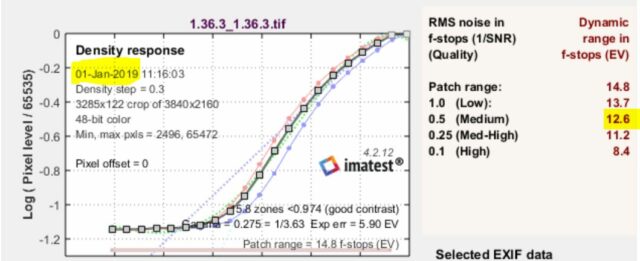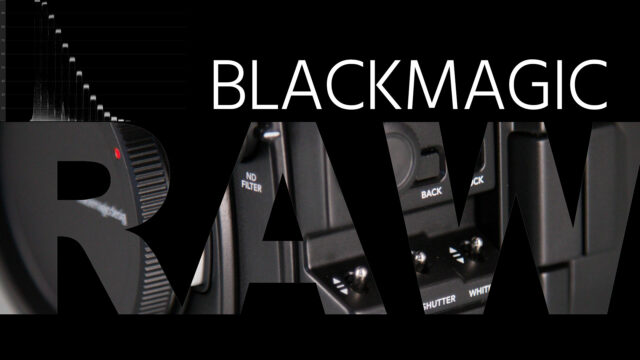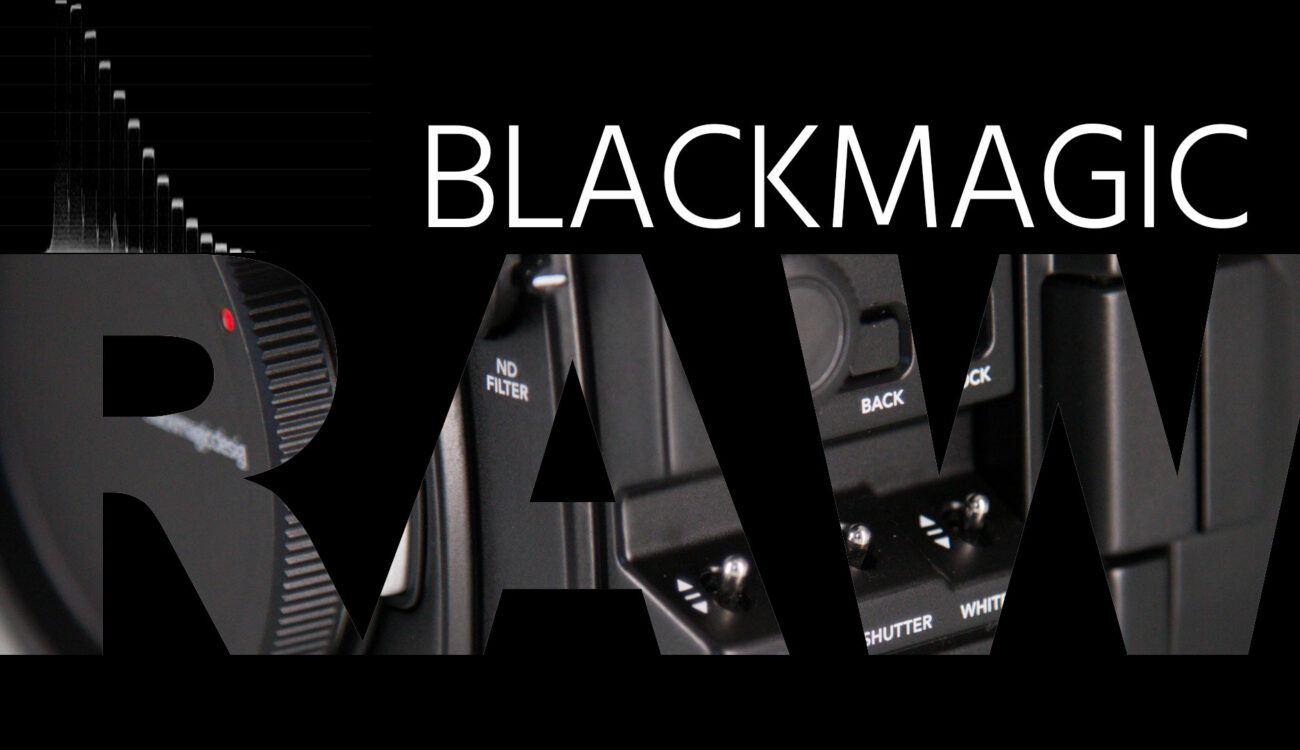
EDIT: Based on multiple comments made by our audience suggesting that the original results of the URSA Mini Pro 4.6 Dynamic Range tests may be flawed since we did not execute camera black shading prior to the tests, we decided to rerun it. Our workflow was as follows: Let the UMP 4.6 warm up for about 15min, perform black shading in the menu with the lens cap on and then repeat the tests at 5600k WB.
Nevertheless, thank you all for your suggestions, keep them coming in the future as we all can learn from each other!
Original Article:
When Blackmagic RAW (BRAW) was announced a while ago, I was curious to get my hands on a BMD URSA Mini Pro and test it’s dynamic range with this new codec. The combination of having the full flexibility of 12bit RAW and smaller file sizes at the same time is a real innovation of BMD. How does it fare on the UMP 4.6?
A while ago BMD was so kind to send us the URSA Mini Pro 4.6 but unfortunately, we were all out traveling yet there was time to install the new firmware 6.0 and test the dynamic range at ISO 800 and 3200 using our test setup described here.
One note upfront: I was very surprised to see the playback performance of BRAW in DaVinci Resolve Studio 15.2. I am using an I7-4720HQ Laptop with 16GB RAM and a GTX980M graphics card, and 4.6k ProRes XQ resulted in ~7 frames / second playback (fps), 4.6k RAW DNG (lossless) resulted in ~11 fps, whereas BRAW had smooth 24 fps playback in a UHD timeline! Hence, not only smaller filesizes with BRAW but also vastly improved playback – a real winner combination.
4.6k ProRes XQ ISO 800 dynamic range results
As a baseline, we started first with our standardized testing procedure analyzing the 4.6k ProRes XQ dynamic range. Here, at ISO 800 the UMP 4.6 does not disappoint and comes in with a strong 12.5 stops of dynamic range at a signal to noise ratio of 2 according to our IMATEST analysis (13.6 stops at a signal to noise ratio of 1). I also tested ISO 400, which yielded slightly lower results. This is the best result in our recent 2018 testing, coming in half a stop higher than the Sony FS7. However, quite far from the 15 stops that Blackmagic Design claim. Anyways, we are going to test BRAW subsequently, so let’s see. The noise floor looks very clean, looks like some internal noise reduction is going on here.
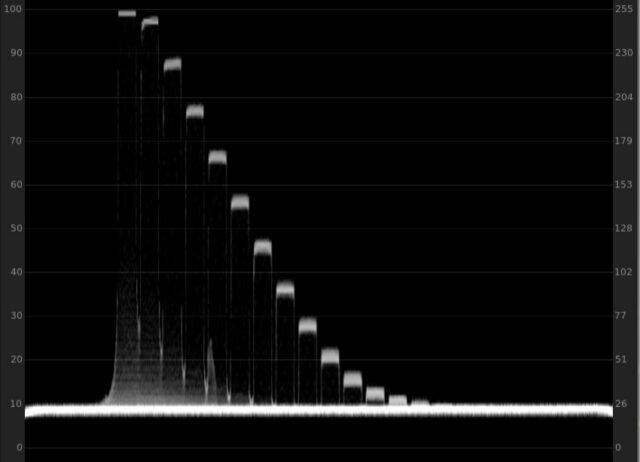
Fig.1: Step chart waveform plot of the UMP 4.6k ProRes XQ at ISO 800: a little more than 12 stops can be discerned above the noise floor (code values scaled to 8bit).
4.6k BRAW dynamic range results
Now, there is a little issue with BRAW and our standardized testing workflow, as we usually try to avoid any 3rd party software when extracting keyframes for our IMATEST analysis (other than FFmpeg) to avoid any kind of manipulation/influence of this software to the image. With BRAW this philosophy doesn’t work, as we have to use DaVinci Resolve to develop the files – the latest version 15.2 Studio in our case.
ISO 800 BRAW constant bitrate 3:1 4.6k scaled to UHD
Now, using ISO 800 yielded again the best results, with the dynamic range coming in at an even stronger 12.6 stops at a signal to noise ratio of 2 (13.7 stops for SNR = 1). However, this slight difference to ProRes might be also a result of scaling the 4.6k BRAW file to UHD (3840×2160) – as there is no 4.6k timeline preset in DaVinci Resolve (for exporting keyframes to IMATEST).
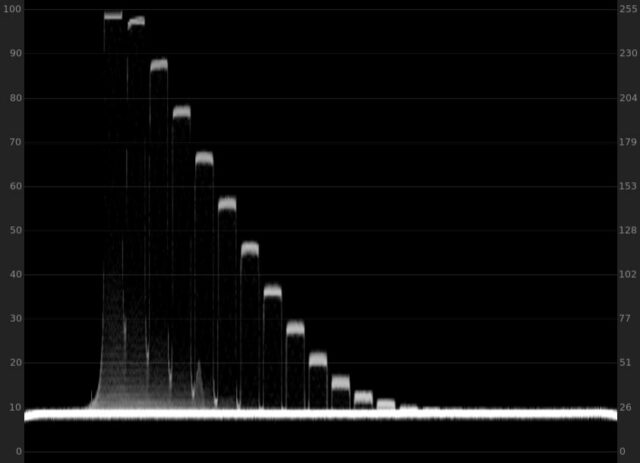
Fig.2: Step chart waveform plot of the UMP 4.6k ISO 800 BRAW. Again, a bit more than 12 stops can be identified visually above the noise floor.
NOTE: DaVinci Resolve offers a “highlight recovery” option for BRAW, which can reconstruct the RGB channels even if one channel is already clipped. Together with the noise reduction features, you can heavily post-process the BRAW files – I just tried around a little bit and was able to reach around 13 stops for SNR = 2 (14 stops for SNR = 1). However we don’t count this result as our intention is to test the untouched files straight off the camera – this is not a post-processing contest, it is about a standardized result using a standardized workflow for all the cameras we test.
ISO 3200 BRAW constant bitrate 3:1 4.6k scaled to UHD
For ISO 3200 we counted 11.7 stops for an SNR = 2 (12.9 stops for SNR = 1), again without post-processing. Playing around with the highlight recovery option and noise reduction, I was able to get around 12 stops for SNR = 2 (13 stops for SNR = 1).
Noise kicks in, hence about one stop is lost vs ISO 800. This is still a very good result.
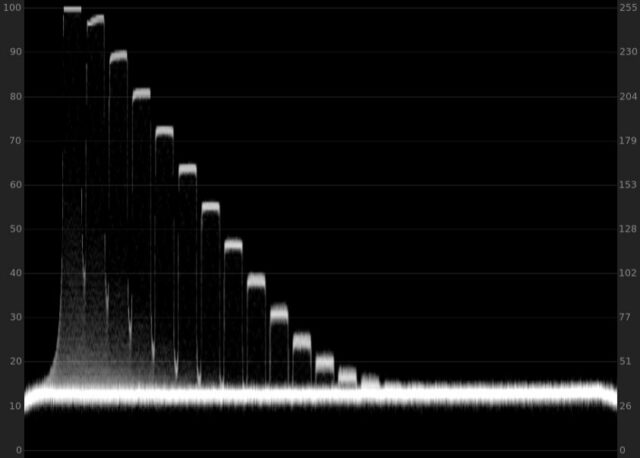
Fig.3: Step chart waveform plot of the UMP 4.6k at ISO 3200: noise kicks in, and about one stop is lost vs. ISO 800, leading to around 12 stops of dynamic range.
4.6k RAW DNG (lossless) dynamic range results
Similar to BRAW, we have to develop the RAW DNG files in DaVinci Resolve in order to export keyframes for analysis in the IMATEST software.
Interestingly, the dynamic range results of the Cinema DNG files without postprocessing are lower than with ProRes and also BRAW, coming in slightly above 11 stops untouched (SNR = 2). The DNG files exhibit much more noise than BRAW and ProRes, hence leading to a lower dynamic range reading in IMATEST. This is a similar phenomenon as we observed with the BMPCC 4k. Using postprocessing like the highlight recovery feature in Resolve along with noise reduction lifts it above ProRes and BRAW (I played around and was able to get more than 13 stops at an SNR = 2, and almost 14 stops for SNR = 1).
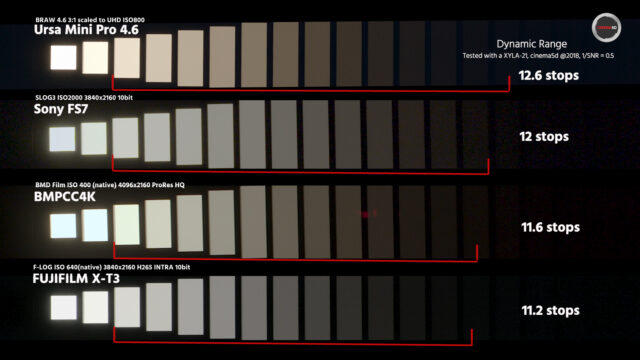
Fig. 4: dynamic range comparison of the UMP 4.6k (BRAW) ISO 800 result with other cameras. It fares very well, coming in one stop higher than the BMPCC4k.
Conclusion
When testing the various codecs on the UMP 4.6k there are clear signs of internal noise reduction going on in ProRes and BRAW, very similar to what we observed with the BMPCC4k (please watch particularly the end of our BMPCC4K review for an insight into our testing procedure for dynamic range).
Speaking of the BMPCC4k, the UMP4.6k overall comes in one stop higher with regards to the dynamic range. Impressive. However, I cannot reproduce the 15 stops dynamic range that Blackmagic Design are claiming, even at a signal to noise ratio SNR = 1 the maximum I was able to squeeze out by heavy post-processing was about 14 stops. In contrast to this, I was able to confirm the 13 stops for the BMPCC4k at SNR = 1, thereby confirming Blackmagic’s statements.
Therefore the untouched BRAW ISO 800 SNR = 2 (or 1/SNR = 0.5) dynamic range result will be the cinema5D reference for future dynamic range comparisons with other cameras.
We know that many of you are waiting for an overview chart of all our dynamic range and other technical tests, and please stay tuned for a bit, we are still working on it. There’s a lot of parameters to think about, and also it’s not so easy to display elegantly on our site – however it won’t be long until we will share it with you!
You can find Nino’s Ursa Mini Pro Hands-On video review by clicking here and Johnnie’s review and “real world footage” by clicking here.
Did you already work with the URSA Mini Pro 4.6 in RAW recording mode? If yes, What is your impression? Please share your experience with us in the comments below.
